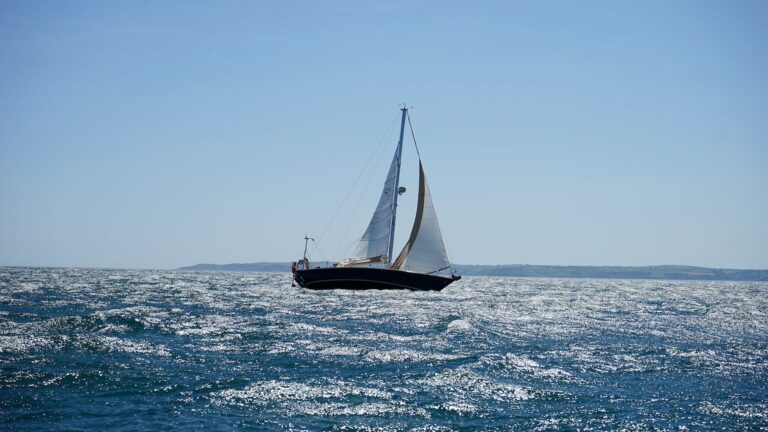Is Sailing High Risk?
Sailing is a thrilling and rewarding experience, but it’s important to understand the potential risks involved before getting out on the water.
Despite the fact that sailing can be considered a dangerous activity, with proper risk management, it can be an incredibly safe endeavor as well. This article will discuss sailboat safety, potential hazards, and how to mitigate risk while taking to the seas!
Definition Of Sailing
Sailing is a form of recreational boating that involves using the wind as the main source of propulsion to move through the water with a sailboat or sailboard (windsurf).
It can be enjoyed on its own or as part of a larger journey such as racing, cruising, or fishing. Sailboats come in all sizes from small dinghies to large yachts, and they can range from simple designs to more advanced vessels with modern amenities and technology onboard.
Overview of Sailing Safety
The U.S Coast Guard’s 2021 Recreational Boating Statistics report indicates that there were only 658 reported boating fatalities in 2021 despite numerous reported accidents throughout the year – making sailing statistically safer than other outdoor activities such as motorcycling or skiing according to their data! This is due to strong safety regulations, improving technology in boats themselves, increasing education for sailors, and improved navigation tools such as GPS systems that allow for more accurate tracking and mapping when out on the water.
Potential Risks in Sailing
Despite its relatively low fatality rate compared to other activities, there are still potential risks involved when sailing – both for those out on the boat itself as well as those living on land near it! Some of these hazards include:
Weather Conditions
Weather conditions can pose an immense hazard while out at sea – strong winds can whip up large waves in an instant causing capsizing if crews are not prepared accordingly or if they fail to take proper precautions while maneuvering through rough waters!
Additionally, sudden storms with heavy rain, hail or lightning can be difficult to navigate through safely without adequate preparation beforehand by checking weather forecasts before setting sail and having a plan for what to do should conditions become dangerous during your voyage!
Equipment Failure
Equipment failure is another major risk when sailing – this includes malfunctioning sails (or their lines), propellers, masts or rigging (the lines used for hoisting sails) – all of which can cause serious damage if not regularly maintained!
Additionally, poor navigation tools or outdated charts could lead sailors astray into uncharted waters where they may get lost or even run aground on shallow reefs if they’re not paying attention!
Human Error
Human error is one of the most common causes of accidents at sea – this includes inexperience captains who don’t know how to properly operate their boat; crew members who don’t know basic safety protocols; fatigue from long voyages leading to poor decision making; and alcohol/drugs impairing judgment which could lead sailors into risky situations with dire consequences! It’s important for all crew members onboard a vessel understand their roles and responsibilities while out at sea so that everyone works together efficiently and safely during any voyage!
Navigation Challenges
Navigation challenges are also common when sailing due to unpredictable weather conditions that make it difficult for captains to accurately predict where they’re going or how long it will take them to get there!
Additionally, strong currents caused by tides/waves could potentially push boats off course if not accounted for beforehand – this means crews need good navigational tools such as GPS systems onboard so they know where they’re going at all times!
Legal Considerations
Lastly legal considerations should always be taken into account when sailing – this includes understanding local laws related to boat operation; ensuring you have proper documentation/permits required by certain bodies of water; adhering strictly to navigation lights/regulations at night; avoiding restricted areas such as military zones/protected waters; understanding where you’re allowed/not allowed anchor; etc…
All these factors should be considered so you don’t get yourself into any legal trouble while out enjoying your voyage!
Mitigating Risk in Sailing
Risk management is key when it comes to staying safe while sailing – some steps you can take include:
- Choosing safe destinations/routes based off your experience level + weather forecasts
- Understanding + following local boating regulations
- Adequate preparation + planning ahead before setting sail
- Accumulating experience + training over time (can join a local sailing club!)
- Investing in quality equipment that meets current safety standards (ex: life jackets/safety flares)
Conclusion
Overall while there are always risks associated with any outdoor activity including sailing; these risks can be effectively managed by following proper protocols + planning ahead whenever possible! By understanding potential hazards + taking necessary precautions before hitting the open seas – sailors can enjoy a safe + rewarding experience no matter where their journey takes them!.







